#Torin Thatcher
Text

#The Snows of Kilimanjaro#Gregory Peck#Susan Hayward#Ava Gardner#Leo G. Carroll#Torin Thatcher#Ava Norring#Helene Stanley#Marcel Dalio#Vicente Gómez#Richard Allan#Henry King#1952
2 notes
·
View notes
Text



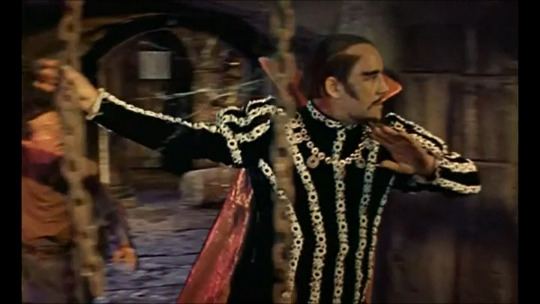
youtube
Jack the Giant Killer (1962)
My rating: 6/10
Every time I watch this, I almost immediately forget about the squid lizard, which on one hand is a shame because it's very good, but on the other hand this way it's a delightful surprise each time
#Jack the Giant Killer#Nathan Juran#Orville H. Hampton#Kerwin Mathews#Judi Meredith#Torin Thatcher#Youtube
2 notes
·
View notes
Photo

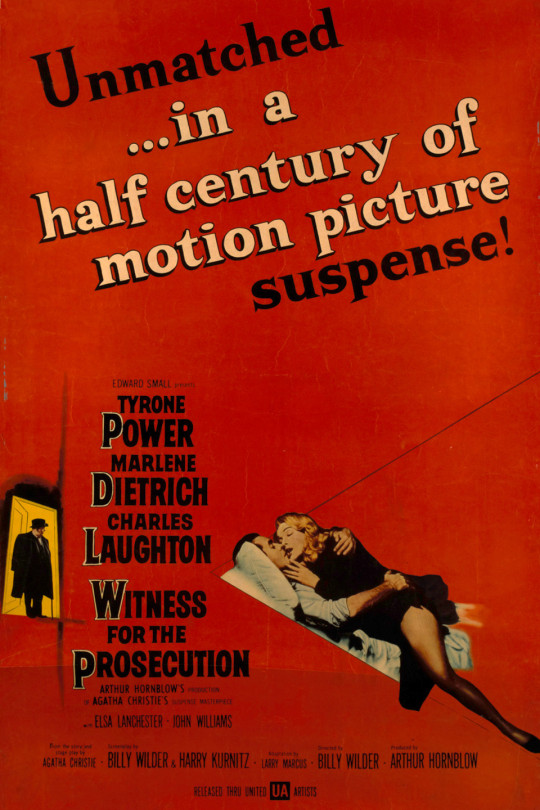

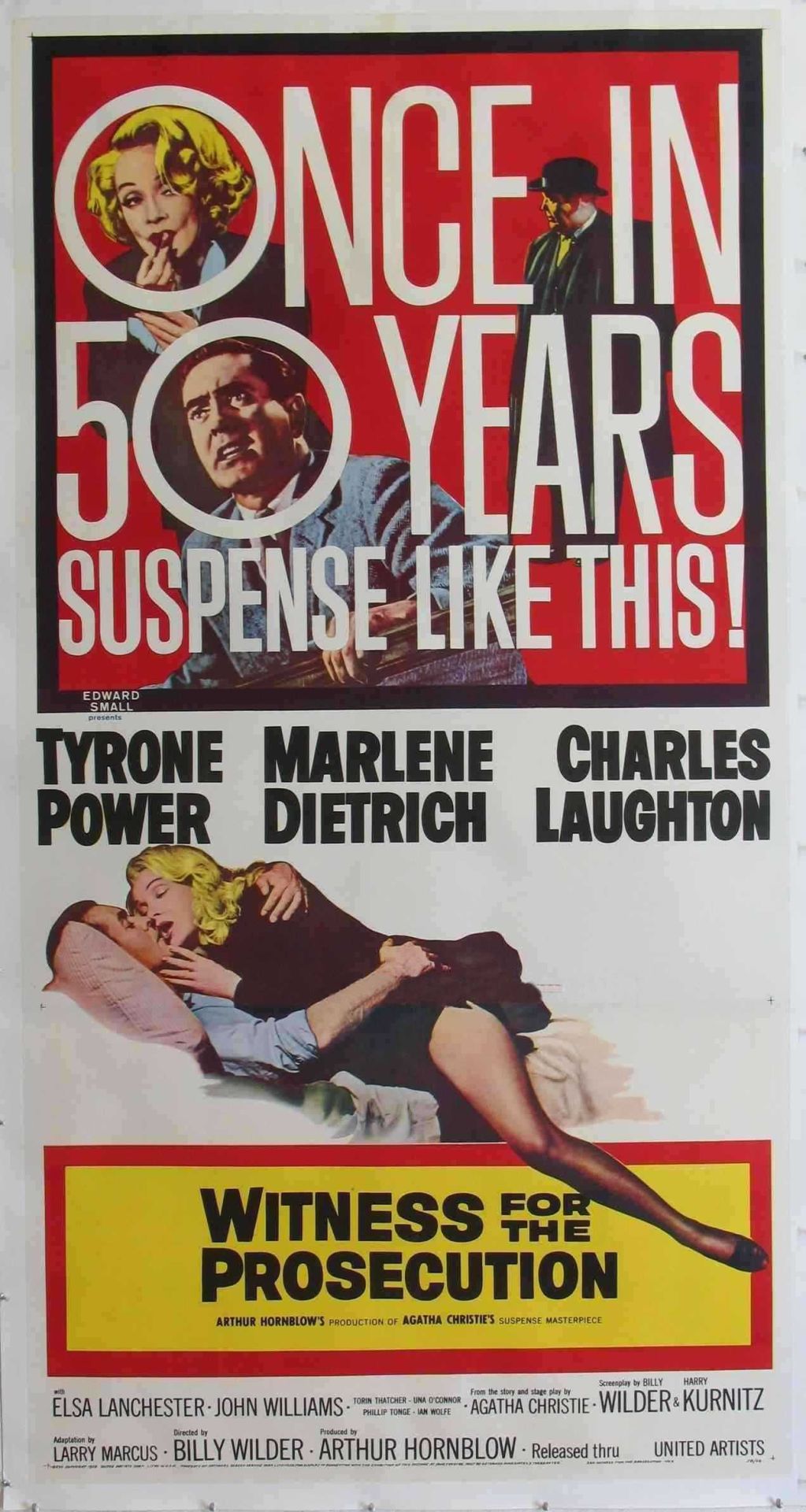
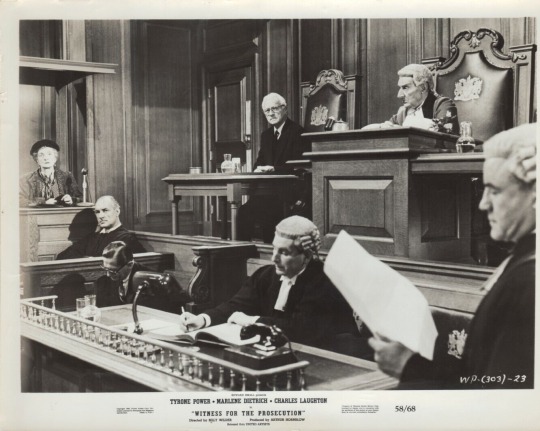





Witness for the Prosecution (1957) Billy Wilder
August 22nd 2022
#witness for the prosecution#1957#billy wilder#charles laughton#marlene dietrich#tyrone power#elsa lanchester#ian wolfe#henry daniell#john williams#una o'connor#torin thatcher#francis compton#norma varden#philip tonge#ruta lee
30 notes
·
View notes
Text
Actors with a Mythic quality
I picked some actors who I feel like have a mythic quality suited to the fantasy genre ,like they stepped out of an old tale and picked actors who appeared in fantasy films/films based on myth and legend and folklore .Feel free to discuss and even add more mythic actors .
Nigel Green

Torin Thatcher

Jean Merais

Toshiro Mifune

Georgy Millyar

Sabu Dastagir

Max Von Sydow

Kirk Douglas

Breno Mello
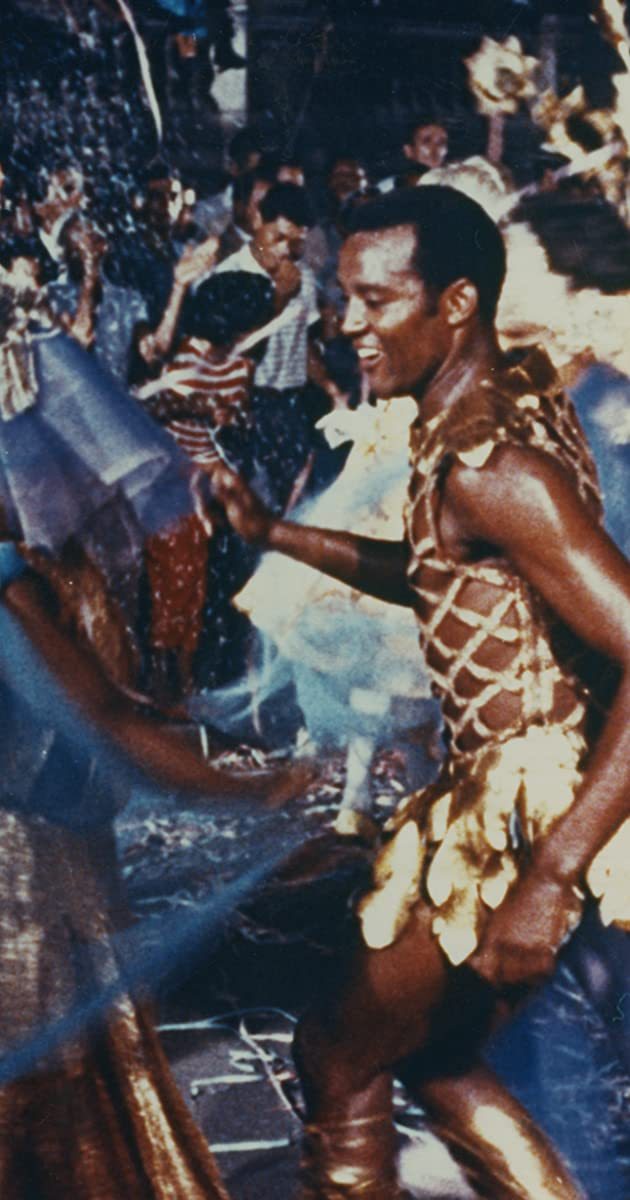
Richard Harris
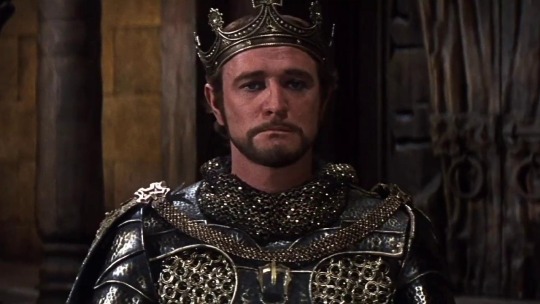
@ariel-seagull-wings @metropolitan-mutant-of-ark @the-blue-fairie @amalthea9 @filmcityworld1 @themousefromfantasyland @princesssarisa @angelixgutz
#fantasy#max von sydow#richard harris#nigel green#Sabu#Breno Mello#kirk douglas#Georgy Millyar#Toshiro Mifune#Jean Merais#Torin Thatcher
31 notes
·
View notes
Text

Birtbday remembrance - Torin Thatcher #botd
3 notes
·
View notes
Text

The Robe (1953)
Henry Koster’s The Robe, distributed by 20th Century Fox, appeared near the beginning of an era where religious epics and sword-and-sandal films became massive box office draws worldwide. Cecil B. DeMille’s Samson and Delilah (1949) and Mervyn LeRoy’s Quo Vadis (1951) had already laid the foundation on which Koster’s film, adapting Lloyd C. Douglas’ novel of the same name, would find its success. Despite The Robe being highly influential in Hollywood and becoming the highest-grossing film of 1953, the likes of DeMille’s The Ten Commandments (1956) and William Wyler’s Ben-Hur (1959) overtook it artistically and financially – no shame there, as those are two far superior films.
So what is The Robe’s claim to movie history beyond its initial theatrical earnings? When The Robe first came to theaters, 20th Century Fox advertised it as the first film ever made in CinemaScope. Created by Fox’s president, Spyros P. Skouras, CinemaScope was a format in which a widescreen camera lens contracted its widescreen shots onto regular 35mm film and, during theatrical projection, another lens would de-contract the image from the 35mm film in order to project a widescreen format. Theaters would only need to make minor, inexpensive modifications to their projectors in order to show a film in true CinemaScope, a 2:55:1 widescreen aspect ratio. Almost all other films were shot in the Academy ratio at the time (1.37:1, close to the 4:3 ratio – think: black bars on the left- and right-hand sides of a widescreen monitor – seen on many older standard computer monitors and televisions). With increasing competition from television, Fox executives believed CinemaScope could be a way to lure audiences back into theaters. Despite this overreaction from Fox’s executives (as well as the other major Hollywood studios), the legacy of CinemaScope’s innovation is still apparent today. Seven decades later, widescreen formats, not the Academy ratio, are the default in film and television.
Walking through the markets of Rome, returning Roman Empire tribune Marcellus Gallio (Richard Burton) reunites with his childhood sweetheart, Diana (Jean Simmons), who is now promised to Marcellus’ rival, Caligula (an always-sneering Jay Robison). Not long after, Marcellus – out of pettiness rather than financial sense – outbids Caligula for the Greek slave, Demetrius (Victor Mature). Marcellus immediately frees Demetrius, but Demetrius thinks of himself as honor-bound to stay by Marcellus. Elsewhere, an incensed Caligula reassigns Marcellus to Palestine – which, to the film’s Roman characters, might as well be the armpit of the Roman Empire. Marcellus and Demetrius go to Jerusalem, where they witness a man named Jesus enter the city, heralded by crowds of Jews greeting him with palms. Several days later, Judean Governor Pontius Pilate (Richard Boone) orders Marcellus to crucify Jesus on Calvary. Marcellus executes the order but, during and after the crucifixion, witnesses and experiences supernatural events. Demetrius, who has become a follower of Jesus during that week, obeys Marcellus when he asks him to fetch Jesus’ robe. The moment Marcellus dons the robe, he suffers something like a seizure. He falls out with Demetrius, and spends the rest of the film reckoning with his conscience over his role in Jesus’ crucifixion.
The film also stars Michael Rennie as Peter, Dean Jagger as Justus, Torin Thatcher as Senator Gallio, and Ernest Thesiger as Emperor Tiberius. Michael Ansara and Donald C. Klune are both uncredited as Judas Iscariot and Jesus, respectively.
The Robe has the misfortune of peaking in the first half. The adapted screenplay from Gina Kaus (1949’s The Red Danube), Albert Maltz (one of the blacklisted Hollywood Ten; 1950’s Broken Arrow), and Philip Dunne (1941’s How Green Was My Valley) is at its most interesting whenever Marcellus and Demetrius find themselves at odds with the other. In the scenes they share together, that happens often. But when Demetrius disappears after their disagreement over Jesus’ robe midway through, the film begins to sag with no foil for Burton to play off of.
For the entirety of this film, Richard Burton’s acting is overwrought. Burton, who had just arrived in Hollywood the year before to star in My Cousin Rachel (1952), is leaning too deeply into his theatrical roots here. His grandiose exclamations, stiff facial acting, and inconsistent line delivery result in a performance that is easily the weakest part of this film (Jean Simmons is also guilty, to a far lesser degree, of these same flaws in her performance). The Robe requires Burton’s Marcellus to undergo a spiritual conversion – becoming an adherent of Jesus despite following orders to crucify him, a developmental arc more dramatic than any other character’s in this film. Burton’s inability to convincingly sell this conversion (the stoic masculine tension, which some will interpret as coded homosexuality, between Burton’s Marcellus and Mature’s Demetrius does not help) weakens the film’s spiritual power.
Instead, it is Mature who is The Robe’s reliable scene-stealer. Mature, at one time likened to a “miniature Johnny Weissmuller”, has the classical Greek physique that, frankly, Burton does not. And in contrast to Burton at this time in their careers, Mature was more capable of a nuanced performance, as evidenced in his roles as Doc Holliday in My Darling Clementine (1946) and Nick Bianco in Kiss of Death (1947). As Demetrius, his soul hardened through his enslavement, there remains hope for a life free from the yoke of the Roman Empire and its callous slave masters. One sees it in his face during Holy Week, culminating with seeing Jesus dying on the cross. His faith is there, too, during a torture scene upon his return to Rome and an encounter with Peter. Amid miracles and cruelties, Mature’s Demetrius is simply the most compelling character of The Robe and the viewer – through Mature’s performance, especially in contrast to those of Jean Simmons and Richard Burton’s – can discern his genuine turn of faith. The Robe’s failure to showcase this inner awakening more believably is the fault of its two central actors and its screenplay; Mature’s performance and Demetrius’ characterization are all that saves the narrative.
One aspect of Christianity that The Robe captures confusingly (and oxymoronically) is the insignificance of Judea and the prominence of early Christianity in Rome in the time immediately following Jesus’ crucifixion. Oftentimes in Biblical epics, Judea is a centerpiece of the Roman Empire when, in truth (and in The Robe), it was a relative backwater. By Caligula’s reign between 37 and 41 CE, Christianity almost certainly would not have had a substantial presence in Rome at that time. So while Caligula would probably see Christianity as a threat, the film’s decision to treat the early Christians as a clear and present danger to his rule and the Roman state religion is the film’s glaring historical inaccuracy. The Robe – the book and the film – muddies the timeline from Jesus’ crucifixion to the film’s final scene in Caligula’s court. The relative suddenness of the Roman Empire seeing the early Christians as a very minor cult into becoming an Empire-wide menace is difficult to reconcile.
With few other post-silent film era Biblical epics as a guide, The Robe helps set the aesthetic of its fellow Biblical epics and sword-and-sandals movies going forward through its costumes and production design. The work of costume designers Charles LeMaire (1950’s All About Eve, 1956’s Carousel) and Emile Santiago (1952’s Androcles and the Lion, 1958’s The Big Country) is resplendent, regardless of either the Roman or Judean setting. Art directors Lyle R. Wheeler (1939’s Gone with the Wind, 1956’s The King and I) and George Davis (All About Eve, 1963’s How the West Was Won) and set decorators Walter M. Scott (All About Eve, 1965’s The Sound of Music) and Paul S. Fox (The King and I, 1963’s Cleopatra) all make full use of the CinemaScope format and color to enliven the scenery – a sumptuous visual treat for the viewer, and, to reiterate, setting a standard that the crew of The Ten Commandments and Ben-Hur both would study and surpass.
Of all of 20th Century Fox contracted stalwarts behind the camera, composer Alfred Newman was the studio’s most important figure. If Fox’s executives needed a composer to craft a score for what they would consider would be their prestige motion picture of the year, Newman – who composed the original 20th Century Fox fanfare and its CinemaScope extension (the extension, which is now inextricable from the fanfare, was first introduced in 1954’s River of No Return) – was almost always their first choice.
youtube
In one of Newman’s finest scores of his career, it is his choral compositions, with incredible help from his longtime choral supervisor Ken Darby, that form the score’s emotive spine. Jesus’ motif, shared between wordless choir and strings, appears almost immediately, in the opening seconds of the “Prelude”. During the many invocations of a Messiah before Jesus’ first physical appearance in The Robe, his motif shifts, changes form, and modulates – imparting not spiritual comfort or devotion, but a mysteriousness and otherworldliness. When Jesus (whose face we never see) first appears in Jerusalem on Palm Sunday, the cue “Passover/Palm Sunday” represents one of the rare juxtapositions of the brass-heavy martial music representing the Roman presence in Judea and Jesus himself. The modulation to a major key at 1:22 in this cue, with festive percussion, also includes one of the only instances of celebratory choral music in the score. Jesus’ motif in “Passover/Palm Sunday”, appears at 2:26 – cementing his (and Christianity’s) association with the cue, and appearing as the only instance in which one might consider this motif triumphant.
Choruses, which Western viewers so often associate in religious movies as angelic musical devices, become mournful in “The Crucifixion” – arguably the standout cue of Newman’s score. Even though one might be well aware of Jesus’ death and can anticipate a turn in the music (starting moments earlier in “The Carriage of the Cross”), it is startling to hear Newman’s composition change so rapidly. But it is in these several minutes depicting Jesus’ final moments that Newman, with modifications to his harmonies and orchestration, transforms Jesus’ motif to evoke its tragic dimensions. It is magnificent scoring from Newman, and this is not even mentioning his wonderful demarcation of Roman and Judean identities through his score.
In a film about faith – how it comforts, destroys, heals, and vexes – one wishes that the characterization of The Robe’s supposed lead characters in Marcellus and Diana could feel more plausible. The film’s final scene, possibly allegorizing of screenwriter Albert Maltz’s travails as a blacklisted figure in Hollywood, is decently powerful, but it needs far more storytelling support from numerous scenes preceding it.
As it is, the film’s expressive power lies within Demetrius and Victor Mature’s performance. So how fortunate that, because Fox also wanted to make a sequel to The Robe even before it finished production, Mature also signed a contract to appear in a sequel. Nine months after The Robe made its theatrical debut, Victor Mature starred in Demetrius and the Gladiators, directed by Delmer Daves and also seeing Michael Rennie and Jay Robinson reprise their roles as Peter and Caligula, respectively. Though it did not top the box office for that year like The Robe did, Demetrius and the Gladiators was a financial boon for Fox.
With Hollywood’s major studios always ready to respond to the box office successes of their rivals, The Robe helped make possible the decade of Biblical and sword-and-sandals epics to come – and the required viewings for many a Sunday School student in the years hence. These films were Studio System Hollywood in full maximalism, adopting human and tactile scales seldom seen today.
Yet outside of churchgoers, The Robe – for its CinemaScope and genre-specific innovations – has seen its standing slip gradually over the years, no thanks to the reputations of better movies of this tradition and, regrettably, decisions to keep 20th Century Fox’s valuable past under lock and key. 20th Century Fox’s refusal to distribute their classic films more often and more widely – before and after the studio’s 2019 takeover by the Walt Disney Company (and post-takeover, I believe the situation is now worse) – is resulting in films like The Robe slip through the proverbial cracks of film history, sights unseen for younger film buffs. That is unfortunate, especially as The Robe, almost incidentally (and no matter my aforementioned criticisms of the work itself), continues to quietly wield, by virtue of being the first CinemaScope film, a remarkable influence over cinema worldwide.
My rating: 6/10
^ Based on my personal imdb rating. My interpretation of that ratings system can be found in the “Ratings system” page on my blog. Half-points are always rounded down.
For more of my reviews tagged “My Movie Odyssey”, check out the tag of the same name on my blog.
#The Robe#Henry Koster#Richard Burton#Jean Simmons#Victor Mature#Michael Rennie#Jay Robinson#Dean Jagger#Torin Thatcher#Richard Boone#Michael Ansara#Leon Shamroy#Alfred Newman#Ken Darby#Charles LeMaire#Emile Santiago#Lyle R. Wheeler#George Davis#TCM#My Movie Odyssey
1 note
·
View note
Text
The 7th Voyage of Sinbad (1958)
While sailing with Princess Parisa to Baghdad to their wedding, Sinbad finds the Colossa Island and anchors his vessel to get supplies for the starving crew. Sinbad and his men help the magician Sokurah to escape from a Cyclops that attacks them, and Sokurah uses a magic lamp with a boy jinni to help them; however, their boat sinks and he loses the lamp. Sokurah offers a small fortune to Sinbad…
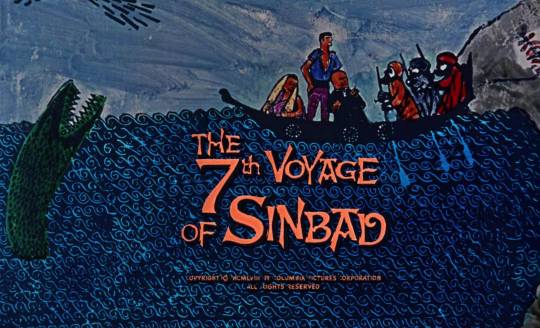
View On WordPress
0 notes
Text
The Strange Case of Dr. Jekyll and Mr. Hyde
The Strange Case of Dr. Jekyll and Mr. Hyde
The Strange Case of Dr. Jekyll and Mr. Hyde (1968) starring Jack Palance, Denholm Elliott, Leo Genn, Billie Whitelaw
It should be said that The Strange Case of Dr. Jekyll and Mr. Hyde is an adaptation of the stage play, not the original story. Having said that, it’s an excellent telling of the Jekyll/Hyde story. Jack Palance turns in a great performance as Hyde. Rarely, if ever, has Hyde been…

View On WordPress
0 notes
Text


Diane, 1956
0 notes
Text
Character Name Ideas (Male)
So I've been browsing through BehindTheName (great resource!) recently and have compiled several name lists. Here are some names, A-Z, that I like.
NOTE: If you want to use any of these please verify sources, meanings etc, I just used BehindTheName to browse and find all of these. Under the cut:
A: Austin, Aiden, Adam, Alex, Angus, Anthony, Archie, Argo, Ari, Aric, Arno, Atlas, August, Aurelius, Alexei, Archer, Angelo, Adric, Acarius, Achilou, Alphard, Amelian, Archander
B: Bodhi, Bastian, Baz, Beau, Beck, Buck, Basil, Benny, Bentley, Blake, Bowie, Brad, Brady, Brody, Brennan, Brent, Brett, Brycen
C: Cab, Cal, Caden, Cáel, Caelan, Caleb, Cameron, Chase, Carlos, Cooper, Carter, Cas, Cash, Cassian, Castiel, Cedric, Cenric, Chance, Chandler, Chaz, Chad, Chester, Chet, Chip, Christian, Cillian, Claude, Cicero, Clint, Cody, Cory, Coy, Cole, Colt, Colton, Colin, Colorado, Colum, Conan, Conrad, Conway, Connor, Cornelius, Creed, Cyneric, Cynric, Cyrano, Cyril, Cyrus, Crestian, Ceric
D: Dallas, Damien, Daniel, Darach, Dash, Dax, Dayton, Denver, Derek, Des, Desmond, Devin, Dewey, Dexter, Dietrich, Dion, Dmitri, Dominic, Dorian, Douglas, Draco, Drake, Drew, Dudley, Dustin, Dusty, Dylan, Danièu
E: Eadric, Evan, Ethan, Easton, Eddie, Eddy, Einar, Eli, Eilas, Eiljah, Elliott, Elton, Emanuel, Emile, Emmett, Enzo, Erik, Evander, Everett, Ezio
F: Faolán, Faron, Ferlin, Felix, Fenrir, Fergus, Finley, Finlay, Finn, Finnian, Finnegan, Flint, Flip, Flynn, Florian, Forrest, Fritz
G: Gage, Gabe, Grady, Grant, Gray, Grayson, Gunnar, Gunther, Galahad
H: Hale, Harley, Harper, Harvey, Harry, Huey, Hugh, Hunter, Huxley
I: Ian, Ianto, Ike, Inigo, Isaac, Isaias, Ivan, Ísak
J: Jack, Jacob, Jake, Jason, Jasper, Jax, Jay, Jensen, Jed, Jeremy, Jeremiah, Jesse, Jett, Jimmie, Jonas, Jonas, Jonathan, Jordan, Josh, Julien, Jovian, Jun, Justin, Joseph, Joni,
K: Kaden, Kai, Kale, Kane, Kaz, Keane, Keaton, Keith, Kenji, Kenneth, Kent, Kevin, Kieran, Kip, Knox, Kris, Kristian, Kyle, Kay, Kristján, Kristófer
L: Lamont, Lance, Landon, Lane, Lars, László, Laurent, Layton, Leander, Leif, Leo, Leonidas, Leopold, Levi, Lewis, Louie, Liam, Liberty, Lincoln, Linc, Linus, Lionel, Logan, Loki, Lucas, Lucian, Lucio, Lucky, Luke, Luther, Lyall, Lycus, Lykos, Lyle, Lyndon, Llewellyn, Landri, Laurian, Lionç
M: Major, Manny, Manuel, Marcus, Mason, Matt, Matthew, Matthias, Maverick, Maxim, Memphis, Midas, Mikko, Miles, Mitch, Mordecai, Mordred, Morgan, Macari, Maïus, Maxenci, Micolau, Miro
N: Nate, Nathan, Nathaniel, Niall, Nico, Niels, Nik, Noah, Nolan, Niilo, Nikander, Novak,
O: Oakley, Octavian, Odin, Orlando, Orrick, Ǫrvar, Othello, Otis, Otto, Ovid, Owain, Owen, Øyvind, Ozzie, Ollie, Oliver, Onni
P: Paisley, Palmer, Percival, Percy, Perry, Peyton, Phelan, Phineas, Phoenix, Piers, Pierce, Porter, Presley, Preston, Pacian
Q: Quinn, Quincy, Quintin
R: Ragnar, Raiden, Ren, Rain, Rainier, Ramos, Ramsey, Ransom, Raul, Ray, Roy, Reagan, Redd, Reese, Rhys, Rhett, Reginald, Remiel, Remy, Ridge, Ridley, Ripley, Rigby, Riggs, Riley, River, Robert, Rocky, Rokas, Roman, Ronan, Ronin, Romeo, Rory, Ross, Ruairí, Rufus, Rusty, Ryder, Ryker, Rylan, Riku, Roni
S: Sammie, Sammy, Samuel, Samson, Sanford, Sawyer, Scout, Seán, Seth, Sebastian, Seymour, Shane, Shaun, Shawn, Sheldon, Shiloh, Shun, Sid, Sidney, Silas, Skip, Skipper, Skyler, Slade, Spencer, Spike, Stan, Stanford, Sterling, Stevie, Stijn, Suni, Sylvan, Sylvester
T: Tab, Tad, Tanner, Tate, Tennessee, Tero, Terrance, Tevin, Thatcher, Tierno, Tino, Titus, Tobias, Tony, Torin, Trace, Trent, Trenton, Trev, Trevor, Trey, Troy, Tripp, Tristan, Tucker, Turner, Tyler, Ty, Teemu
U: Ulric
V: Valerius, Valor, Van, Vernon, Vespasian, Vic, Victor, Vico, Vince, Vinny, Vincent
W: Wade, Walker, Wallis, Wally, Walt, Wardell, Warwick, Watson, Waylon, Wayne, Wes, Wesley, Weston, Whitley, Wilder, Wiley, William, Wolfe, Wolfgang, Woody, Wulfric, Wyatt, Wynn
X: Xander, Xavier
Z: Zachary, Zach, Zane, Zeb, Zebediah, Zed, Zeke, Zeph, Zaccai
33 notes
·
View notes
Text

Ava Gardner and Gregory Peck in The Snows of Kilimanjaro (Henry King, 1952)
Cast: Gregory Peck, Susan Hayward, Ava Gardner, Hildegard Knef, Leo G. Carroll, Torin Thatcher, Ava Norring, Helene Stanley, Marcel Dalio, Vicente Gómez, Richard Allan. Screenplay: Casey Robinson, based on a story by Ernest Hemingway. Cinematography: Leon Shamroy. John DeCuir, Lyle R. Wheeler. Film editing: Barbara McLean. Music: Bernard Herrmann.
The film version of The Snows of Kilimanjaro is handsome and dull, just like its protagonist, Harry Street, who lies waiting for death on the plains below the mountain as his life flashes past his eyes. Harry is a writer who has spent his life doing all the things he thinks a writer should, which amounts to a men's magazine version of masculinity: hunting big game, going to bullfights and to war, and sleeping with beautiful women. The actor who plays Harry, Gregory Peck, is handsome, too. And if he's also a little dull it's because Peck is miscast: The part needs an actor with a lived-in face, someone like Humphrey Bogart, who was considered for the role. At 36, Peck was about ten years too young for the role. (The 52-year-old Bogart might have been a shade too old.) Still, Peck does what he can, and it's credible that women like Ava Gardner, Susan Hayward, and Hildegard Knef would have fallen hard for him. But the screenplay by Casey Robinson is a rambling muddle that turns Hemingway's spare prose into melodrama, partly by crafting Gardner's role out of nothing -- or borrowing hints of it from other Hemingway works like The Sun Also Rises and A Farewell to Arms. Henry King, one of those studio directors who were handed big projects because they wouldn't mess them up, brings no particular vision or style to the film. The handsomeness of the movie is mostly in its casting, and in the Oscar-nominated cinematography of Leon Shamroy. Bernard Herrmann's score helps, too.
2 notes
·
View notes
Photo
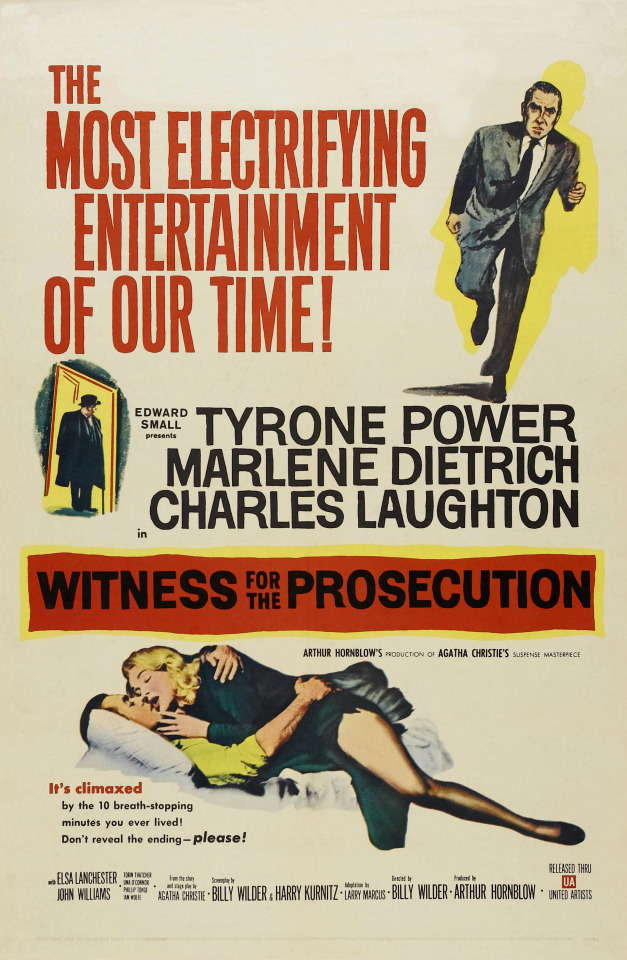
#witness for the prosecution#tyrone power#marlene dietrich#charles laughton#elsa lanchester#john williams#torin thatcher#una o'connor#philip tonge#ian wolfe#billy wilder#1957
7 notes
·
View notes
Text
Podcast 3732
0 notes
Text
youtube
The 7th Voyage Of Sinbad
Richard Eyer
Kerwin Mathews
Torin Thatcher
Kathryn Grant
Regisseur
Nathan Juran
Produzent
Charles H. Schneer
0 notes
Text
Favorite Movie Showcase :7th Voyage of Sinbad
For fantasy month lets revisit one of my favorite fantasy flicks ,by the special effects maestro Ray Harryhausen

In this 1958 film,Sinbad (Kerwin Mathews ) must travbel to the island of Colassa to undo a curse on the Princess Parisa (KAthryn Grant ) while dealing with the scheming Sakura (Torin Thatcher ) ,a magecian obsessed with his lost magic lamp ,as well as various monsters
So this film with a lot I could talk about.How this was one of the first adventure films that embraced the fantastical while other Sinbad films mearly talked about the monsters (Looking at you 1947's Sinbad the Sailor) ,how the film was a passion project for Ray Harryhausen while also being the film that changed his career from monster on the loose sci fi flicks to more romantic whimsical adventure films ,being the start of a trilogy of Sinbad Films .IT's also one of those films that inspired many filmmakers and artists ,and has been passed down a long line of fantasy fans,including myself (My grandparents took my dad to see the Sinbad trilogy on the big screen in the 70's for a special weekend showing ,and when I was a kid my dad got me a boxset of Harryhausen fantasy films ,including this one. This one might be the Harryhausen movie I saw the most ).I think it might be my favorite Harryhausen film ,its always dueling with Jason and the Argonauts and Clash of the Titans for that spot
So Kerwin Matthews plays Sinbad ,and he is the strong jawed no nonesense hero type popular in 50's Hollywood .I think Kerwin Matthews is a very underrated actor and I think he does a really good job selling Harryhausens effects ,when he fights the skeleton it feels like he is really fighting it . I like that Kathryn Grant'sPrincess Parisa actually does stuff,despite being shrunken down for a majority of the movie,she never feels like a damsel in distress and her and Matthews have good chemistry . The stand out of the cast is the always great Torin Thatcher as the evil sorcerer Sakura ,who I like has an uneasy allience with the heroes ,while still scheming and being shady. I also like that he doesnt have the typical evil villain motive! He doesnt want to rule the world,he doesnt want to marry the princess ,he doesnt even have a scheme! He just wants his magic lamp back,and is understandably frustrated that Sinbad keeps telling him no....What makes him a villain a is he has no value for human life ,willing to leave people to die ,actually kill people,curse a princess and even start a war over this obsession.Other notable performances areAlfred Brown as Harufa ,Sinbads loyal buddy who is fun and Richard Eyer as the Genie,who here is a child who wishes to be free
I think the film ,despite not being the biggest budgeted film,has nice production values ,especially the location work in Granada, Spain.The amazing film score by Bernard Hermann is a personal favorite of mine adding to the feel of adventure and danger
Of course the real stars of the film are Harryhausens monsters ,which are showcased in excellent set pieces ! There is a dancing cobra woman,a two headed bird called a Roc ,a dragon, a dueling skeleton and of course most memorable ,two cyclopse.What I love about Harryhausen is his monsters ,no matter how vicious feel real and you feel sorry for them ,with the Roc being a vengeful mother and the dragon hinted to be akin to an abused guard dog .The first cyclops is practically a character in of himself ,being the main threat of the movie,and with a personality.In terms of favorite scenes I like the brawl between the second cyclops and the dragons ,but the stand out is the duel between Sinbad and a reanimated skeleton ,which is one of my favorite sword duels put on film
OVerall this is a fun fantasy adventure and a personal fave of mine
@ariel-seagull-wings @metropolitan-mutant-of-ark @the-blue-fairie @amalthea9 @angelixgutz @filmcityworld1 @princesssarisa @themousefromfantasyland
8 notes
·
View notes
Text
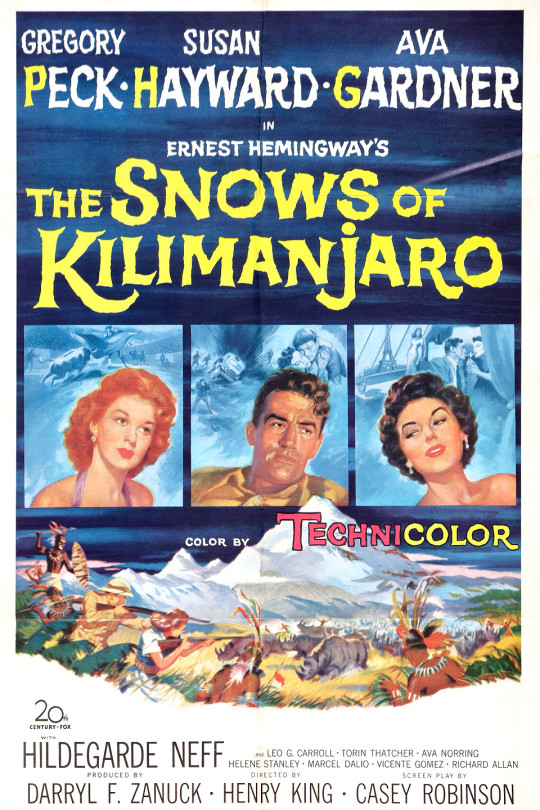
Day 61- Film: The Snows of Kilimanjaro
Release date: September 17th, 1952.
Studio: 20th Century Fox
Genre: Adventure
Director: Henry King
Producer: Darryl F. Zanuck
Actors: Gregory Peck, Susan Hayward, Ava Gardner, Leo G. Carroll, Torin Thatcher, Ava Norring
Plot Summary: Harry Street, a famous writer, is dying of gangrene in Africa. While waiting for help to arrive, his latest wife tries to make him comfortable. As he confronts death, he reminisces about his past loves, and especially his first wife, Cynthia.
My Rating (out of five stars): *** ½
(Spoilers) This is another one of those movies that is so mixed, it’ll be hard to write about. There were many good things about it, but a lot of it didn’t work. Much of the trouble, from my perspective, comes from the attempt to adapt the original short story into a Hollywood production. Almost all of the problems the film had were changes made to the original work.
The Good:
Gregory Peck. He was perfect as a masculine writer and lover of women. He was good at letting the right amount of emotion creep through at the right times. He played a dying man really well, too- he successfully showed the anxiety, the pain, the reflection, and even the irritation with people around him. I cared about his character, even though I didn’t totally like him.
The Technicolor. The print I saw on Youtube was beautiful, vibrant, and warm.
Gregory Peck in Technicolor. We’re talking about one of the most insanely gorgeous and sexy men of the Classical Hollywood era here- then add that luscious color... It could be the most boring movie in the world, and I would still be captivated just watching him!
The location footage. There was a lot of cool footage of Africa, especially the wildlife footage. It was clearly filmed on location.
Susan Hayward. I liked her in this. She’s absolutely stunning in Technicolor as well, and I liked her complicated character. She loves Peck, but she also knows he doesn’t really love her.
The ominous eerie feel to the present scenes in Africa. It almost feels like there’s a plodding drumbeat in the background, counting down Peck’s last moments on Earth. It’s very chilling.
Hildegarde Knef. She was in Diplomatic Courier, and I loved her in that. This role didn’t give her nearly as much to do, but I enjoyed seeing her. I loved the scene when she was sculpting.
The Bad:
The ending! The ending! I knew Hollywood would probably change it, but I had a little hope they might not. They let Bette Davis die at the end of Dark Victory, right? Sadly, Hollywood would not stay faithful to the material this time. The fact that Peck survived just stripped most of the power from the story. Then it got worse, because they made him suddenly fall in love with Susan Hayward as well! It was just the kind of ridiculous thing you’d fear.
Ava Gardner. I don’t know why, but there is just something I don’t like about her. Maybe it’s cause she’s such a “man’s woman” type and I don’t find her appealing at all... But her being cast as Peck’s one true love did not work for me. I didn’t care about her, I didn’t care about their romance, and I didn’t understand why she had such pull over Peck for the whole movie.
The whole plot with Ava Gardner. I suppose I addressed a lot of that above! But, as I wrote, the whole thing was a miss for me.
The absurdly ludicrous reunion of Peck and Gardner in Spain. Hemingway never would have written such a stupidly unbelievable scene.
The rear projection and sets for Africa, especially when juxtaposed with actual location footage. Both the rear projection and the sets were so obvious it was distracting.
The whole idea that ambushing and shooting a large animal proves a guy's manhood. Same with the bullfighting. I don't get why these things are supposed to prove how macho a man is. It bores me.
The way the whole story had to be cleaned up for Hollywood. No prostitutes, of course. Marriage to all the women, of course. Attrition for sins, of course.
0 notes